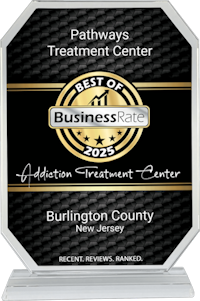Triggers are thoughts, emotions, and other factors that can lead to a relapse or a recurrence of addictive behavior in individuals struggling with addiction. These triggers can range from internal thoughts and emotions to external situations, and they often include everyday objects and stimuli that evoke memories.
Understanding the concept of triggers is essential for individuals on their journey to recovery, as it helps them identify potential pitfalls and develop effective coping strategies for stress. It’s important to know the various aspects of emotional triggers, including types, examples, how to identify them, and the importance of seeking professional help.
What are Triggers?
 Triggers, in the context of addiction, are any thoughts, emotions, people, places, objects, or situations that can elicit a strong desire or urge to use drugs. This can also translate into temptation to engage in addictive (or even self-destructive) behaviors. Triggers can act as catalysts, reigniting the cycle of addiction. Triggers can differ from person to person and may evolve over time. Triggers can increase the likelihood of relapse and are part of the initial set of challenges faced when starting recovery.
Triggers, in the context of addiction, are any thoughts, emotions, people, places, objects, or situations that can elicit a strong desire or urge to use drugs. This can also translate into temptation to engage in addictive (or even self-destructive) behaviors. Triggers can act as catalysts, reigniting the cycle of addiction. Triggers can differ from person to person and may evolve over time. Triggers can increase the likelihood of relapse and are part of the initial set of challenges faced when starting recovery.
For example, a trigger for one individual might be a specific scent that reminds them of a past drug use experience. Whenever they smell that scent, they may remember the experience in a visceral sense and crave that substance. For another person, it could be a certain social setting where substance use is prevalent. They may be unsure how to proceed in those settings without taking in drugs or alcohol, which can in turn increase stress.
Triggers can also be internal, such as feelings of stress, anxiety, or loneliness. The individual may previously have sought solace in addictive behaviors. Understanding and identifying one’s own personal triggers is a crucial aspect of addiction recovery. By recognizing these triggers, individuals can develop coping strategies to effectively manage cravings and prevent relapse. This may involve creating a support network, practicing mindfulness techniques, or engaging in healthy activities to help avoid relapse.
Internal vs. External Triggers
Triggers can be classified into two main types: internal triggers and external triggers. Internal triggers include thoughts, emotions, and physical sensations that occur within an individual. Examples of internal triggers can be feelings like stress, which may have been coped with using addictive substances. The HALT system of identifying triggers names some of the most common emotions that may lead to substance abuse: Hungry, Angry, Lonely, and Tired.
Internal triggers are often deeply rooted in an individual’s past experiences and can be challenging to manage. They can be linked to unresolved trauma, learned behaviors, or coping mechanisms developed over time. A person may use alcohol or illicit drugs to avoid recalling a certain memory.
External triggers, on the other hand, can vary widely from person to person. These might include specific people, places, social gatherings, or even certain smells or sights. They may also change over time as a person works through addiction recovery. For example, a particular song that once evoked strong cravings may lose its effect as new coping mechanisms are developed. Understanding the role of external triggers in addiction can help individuals anticipate and navigate challenging situations, ultimately strengthening their resilience and reducing the risk of relapse.
It’s important to note that common triggers may not always be true for a single person. It often takes time in individual therapy to fully name and identify personal triggers, and even a person may not always know how they’ll feel when they encounter it outside of a treatment setting.
Examples of Triggers
Triggers can vary widely, depending on individual experiences and preferences. Some common examples of triggers include:
- Parties or social events where drugs or alcohol are present
- Certain people associated with past substance abuse (who may still encourage substance use)
- High levels of stress, disappointment, or anger
- Familiar locations linked to drug or alcohol use
- Feeling lonely or isolated (or other feelings linked to past drug use)
It’s important to recognize that it may not always be possible to avoid triggers. For some individuals, triggers may also include specific smells, sounds, or even certain times of day. It’s much more important to think on a wider scale about how to avoid relapse.
Internal triggers such as negative emotions, physical discomfort, or even positive emotions like excitement can play a significant role in prompting substance use. It’s essential to learn how to manage these internal triggers through mindfulness techniques, techniques learned from cognitive-behavioral therapy, or healthy coping mechanisms.
How to Identify Triggers
Identifying triggers is a crucial step in the recovery process. By recognizing the specific factors that can lead to cravings or relapse, individuals can take proactive measures to avoid or manage these triggers effectively.
Take time to think through your daily life and consider what potential triggers you may face over the course of the day. There are various ways to record this information, including:

- Keeping a journal to track emotional states, thoughts, and environmental factors before cravings occur.
- Reflecting on past experiences and identifying common threads or patterns that preceded relapses.
- Asking advice from a therapist or counselor who specializes in addiction therapy.
Identifying triggers can be easier if someone learns how to practice mindfulness. This involves paying attention to the present moment without judgment, which can help individuals become more aware of their thoughts, emotions, and physical sensations. Exercise not only helps improve mood and reduce stress, but it can also provide individuals with a clearer mind. If someone isn’t dealing with physical discomfort or is proud of the healthy habits they’ve managed to build, they may be better able to identify negative thoughts or high-risk situations.
How to Cope with Triggers
Building healthy coping mechanisms is vital for individuals to navigate triggers successfully on a day-to-day level. It is essential to develop a toolkit of strategies tailored to individual needs and circumstances, as well as establish a baseline from which people can draw strength against triggers.
Coping mechanisms for dealing with ongoing triggers include:
- Engaging in regular exercise to reduce stress and boost mood
- Practicing mindfulness and meditation to manage cravings and increase self-awareness
- Establishing a strong support system of friends, family, or support groups
- Employing relaxation techniques, such as deep breathing exercises or progressive muscle relaxation
Incorporating a relapse prevention plan can be beneficial, as it provides a structured approach to managing triggers and maintaining sobriety in the moment. People can plan to call a family member, recite the Serenity Prayer, attend a group therapy meeting, or even think of reasons to stay sober whenever they’re tempted to relapse. It is crucial to experiment with different coping strategies, then tailor them to fit your needs and preferences.
Some individuals find creative outlets (such as art, music, or writing) to be therapeutic in managing triggers. Expressing emotions through creative means can provide a healthy release and serve as a distraction from intrusive thoughts or triggers. It may also help a person center themselves and remember why they chose to become sober. Engaging in activities that bring joy and fulfillment can help individuals build resilience on the path to establishing long-term sobriety.
Create a Relapse Prevention Plan for Triggers
Having a relapse recovery plan in place can significantly increase the chances of managing triggers effectively. You can make an informal plan yourself or develop one with an addiction therapist. It’s important to try and find what puts you at risk for physical relapse (actually taking in the addictive substance), and what may encourage you to start down the path to begin with.
A relapse recovery plan may include:
- Identifying specific triggers
- Strategies to avoid or minimize exposure to them (such as not walking by a liquor store during the time of day you’re most likely to have alcohol cravings)
- Participating in healthy activities or hobbies to engage in when triggered
- A network of supportive individuals who can provide assistance during vulnerable moments
- Stress management techniques you’re working to learn and/or master to reduce your reliance on substances

It is important to recognize that triggers may include environmental cues, emotional states, social situations, or even certain times of the day. For example, if social gatherings serve as a trigger, one strategy could involve politely declining invitations to events where substances are present. But this doesn’t mean stopping all social outings, but maybe suggesting activities with friends who support your recovery.
In addition to avoiding triggers, it is equally crucial to develop a repertoire of healthy coping mechanisms and activities. Engaging in physical exercise, creative outlets such as painting or writing, or mindfulness practices can all provide alternative ways to manage stress and cravings. If you’re not reliant upon substances to help cope with difficult emotions, the temptation will likely not linger long enough to tempt you into relapse.
Learn About Addiction Recovery at Pathways Treatment
At Pathways Treatment, the focus is not just on treating the symptoms of addiction. We work to help you address the underlying issues that contribute to substance abuse. Through personalized treatment plans, clients are guided through a journey of self-discovery and healing, helping them uncover the root causes of their addictive behaviors.
Take the first step towards a healthier, addiction-free future by reaching out to Moving Mountains today. Contact us today to learn more.


